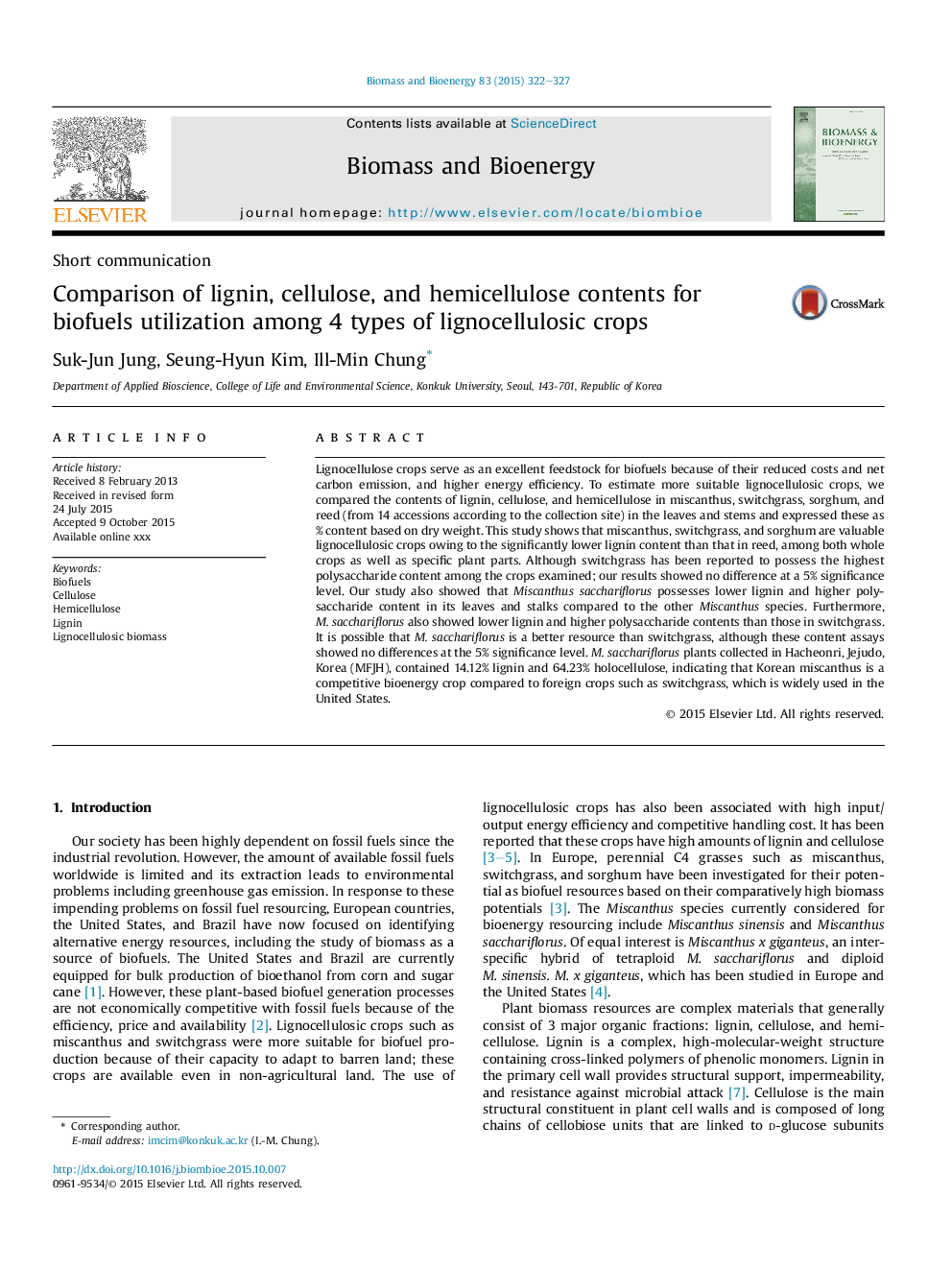| Article ID | Journal | Published Year | Pages | File Type |
|---|---|---|---|---|
| 7063766 | Biomass and Bioenergy | 2015 | 6 Pages |
Abstract
Lignocellulose crops serve as an excellent feedstock for biofuels because of their reduced costs and net carbon emission, and higher energy efficiency. To estimate more suitable lignocellulosic crops, we compared the contents of lignin, cellulose, and hemicellulose in miscanthus, switchgrass, sorghum, and reed (from 14 accessions according to the collection site) in the leaves and stems and expressed these as % content based on dry weight. This study shows that miscanthus, switchgrass, and sorghum are valuable lignocellulosic crops owing to the significantly lower lignin content than that in reed, among both whole crops as well as specific plant parts. Although switchgrass has been reported to possess the highest polysaccharide content among the crops examined; our results showed no difference at a 5% significance level. Our study also showed that Miscanthus sacchariflorus possesses lower lignin and higher polysaccharide content in its leaves and stalks compared to the other Miscanthus species. Furthermore, M. sacchariflorus also showed lower lignin and higher polysaccharide contents than those in switchgrass. It is possible that M. sacchariflorus is a better resource than switchgrass, although these content assays showed no differences at the 5% significance level. M. sacchariflorus plants collected in Hacheonri, Jejudo, Korea (MFJH), contained 14.12% lignin and 64.23% holocellulose, indicating that Korean miscanthus is a competitive bioenergy crop compared to foreign crops such as switchgrass, which is widely used in the United States.
Related Topics
Physical Sciences and Engineering
Chemical Engineering
Process Chemistry and Technology
Authors
Suk-Jun Jung, Seung-Hyun Kim, Ill-Min Chung,
